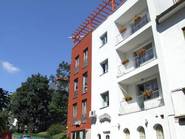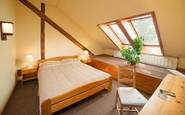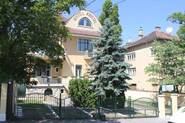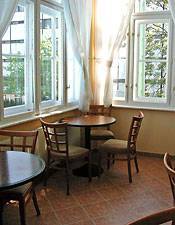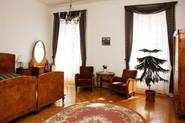Budapest hotel rates are surprisingly higher than one might expect. Still, Paris or London it ain't, and bargains are easier to find here than in Europe's pricier cities. If you stay in one of our editors' picks, expect to spend €35 in low season and €80 in high season for a double room. Our lowest low season doubles go for €40 and our highest high season doubles for €130 per night.
Budapest Hotel Overview

Moral of the story: guest houses, youth hostels and hotels can be found across Budapest, with a range of amenities and at a range of rates.
Geography
The lay of the land can come as a shock to visitors. From a topographical perspective, it is easy to see why Buda, Pest, and Óbuda in the northwest were only united as one city in 1873—quite a late date for such an ancient city.
Buda, west of the Danube, perches atop hills so steep that they sometimes resemble cliffs. Most of the area surrounding Castle and Gellért Hills is made up of upscale residential housing. The area of Buda nearest to Pest has a very limited number of budget hotel choices. Our four Buda listings include two hotels near Margit Island in the northern part of Buda, and two on the relatively flatter ground west of the riverfront hills.
And, as one local put it, "Why would any tourist want to stay in Buda? Everything is happening in Pest." Although restaurants, spas and theaters stand near the Buda waterfront, and several tourist sites stand tall atop the Hills, 90 percent of what tourists want to see and do is in Pest.
Pest is the place. Historically the center of commerce and the home of common people, Pest is the liveliest part of Budapest. It's also where most of our hotel editors' picks are. The land is flat, the sights are numerous, and the nightlife is thriving. Metros, buses and trams run all over the area and link up in dozens of places. And even though areas of interest are spread out, Pest is much easier to traverse on foot than hilly Buda.
Building Matters
The millennial anniversary of Budapest in 1896 witnessed gobs of fanfare and financing, and the construction of many neo-classical buildings, amongst many other modern architectural wonders. Many of these now house hotels.
Most of the rooms we visited and slept in, even ones a few floors up from major thoroughfares, were incredibly quiet thanks to thick construction and large, double-paned windows. Budget hotels in these neo-classical buildings usually offer fans in lieu of air conditioning. Happily for Cheapos, the combination of thick walls and high ceilings make for surprisingly cool quarters during the warmer months. Newly constructed hotels tend to offer air conditioning.
Lastly, keep in mind that many hotels in Budapest will categorize their alternating floors as "half-floors" in order to reduce their taxes. So your "third floor" room may actually be on the fifth floor.

